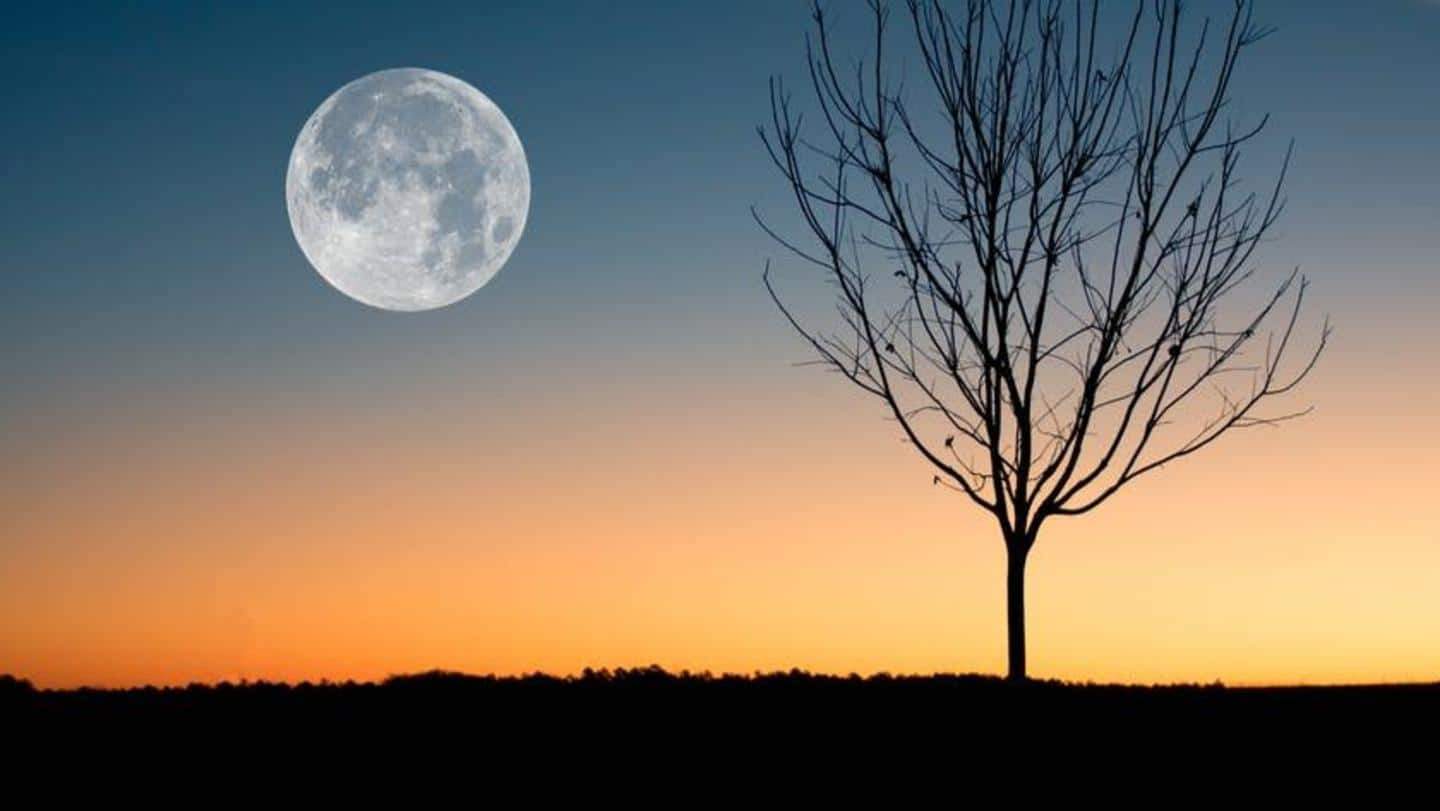
Strawberry, Worm, Flower, and more: How are full moons named?
What's the story
June's Strawberry Moon made quite a lot of headlines across the globe for various reasons. We have 12 full moons a year, sometimes 13, and every full moon has a name representing a seasonal feature. Among these, there are some rare occurrences that are caused by the movement of the natural satellite and its orbit. But do you know how they are named so?
12 full moons a year
A full moon every month
Royal Museums Greenwich's list of the year's full moons suggests all the colloquial names: January - Wolf Moon February - Snow Moon March - Worm Moon April - Pink Moon May - Flower Moon June - Strawberry Moon July - Buck Moon August - Sturgeon Moon September - Full Corn Moon October - Hunter's Moon November - Beaver Moon December - Cold Moon
Winter moons
Wolf Moon and Snow Moon
The January full moon apparently has a real connection with wolves. Experts say that January's full moon is termed Wolf Moon because the likelihood of hearing wolves howl is much greater at this time. Snow Moon is named so because of the snow on the ground in the Northern Hemisphere in February. It is also called Hunger Moon since food becomes scarce.
Spring
Worm Moon, Pink Moon, and Flower Moon
March full moon is termed the Worm Moon supposedly due to the emergence of earthworms at this time. According to The Old Farmer's Almanac, the April full moon is called the Pink Moon due to the blooming of ground phlox, a pink flower common in North America. The Flower Moon in May is simply named so because of the various flowers blooming everywhere.
Mid year
Strawberry Moon, Buck Moon, and Sturgeon Moon
The June full moon is known as the Strawberry Moon because this is when strawberries ripen and are harvested in North America. The Buck Moon in July is related to deers. Apparently, the antlers of male deer reach their peak growth around this time. August's full moon is called the Sturgeon Moon as the giant sturgeon, a species of fish, could be caught easily.
Mid year
Corn Moon and Hunter's Moon
September's full moon is most commonly known as Harvest Moon, but also Corn Moon or Barley Moon, as this is the time to harvest these crops. It is the full moon toward the equinox. Hunter's Moon of October is named so because this is when the tribes started hunting for meat and storing it for the long winter ahead.
Information
Beaver Moon and Cold Moon
November's Beaver Moon was named so because hunters would set traps for beavers at this time. The Cold Moon in December is simply because of the extreme cold at this time. It occurs around the date of the winter solstice.
During a lunar eclipse
Blood moon
A blood moon is a rare event that happens during a total lunar eclipse. When Earth passes between the Sun and a full moon, it casts the moon into shadow. During this time, the Moon takes on a dark reddish-brown color and hence the name. This term may also be used to describe four total lunar eclipses occurring in a row.
Rare occurrence
Blue moon
"That happens once in a blue moon"—you might have come across this phrase often. We compare rare events in our lives to the blue moon. The blue moon is an additional full moon that appears in a subdivision of a year. It is the extra full moon that becomes the 13th of the year. However, the moon does not appear to be blue.
Larger in appearance
When does a supermoon happen?
A supermoon occurs when during a full moon, the Moon is at its closest point to Earth revolving around in its elliptical orbit. Supermoons appear slightly larger than regular full moons. If the Moon is low in the sky, its closeness to other objects on the horizon can make it appear exceptionally huge. Photographers and skygazers particularly love the supermoon for its magnanimous appearance.